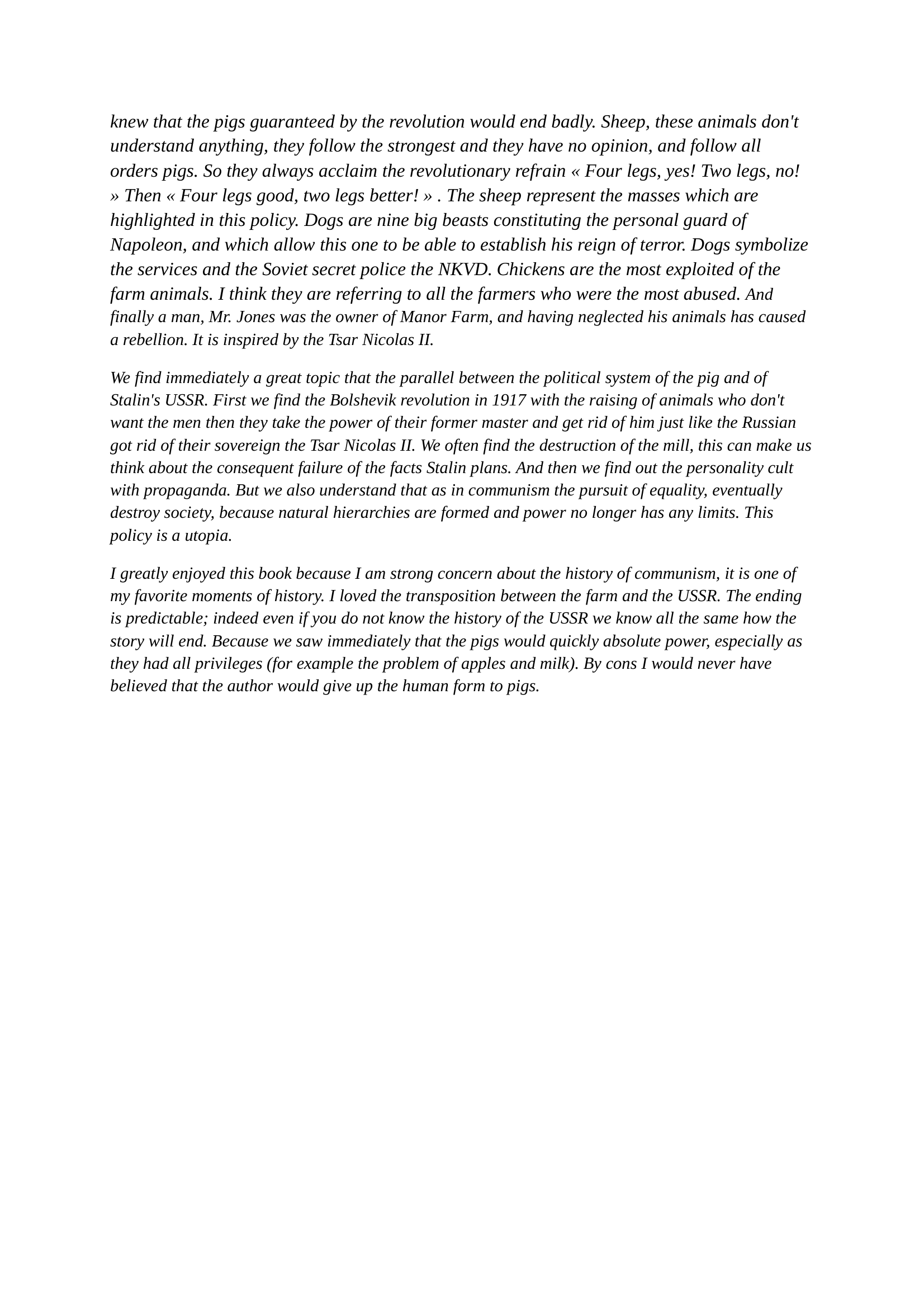animal farm
Publié le 29/06/2013

Extrait du document
«
knew that the pigs guaranteed by the revolution would end badly.
Sheep, these animals don't
understand anything, they follow the strongest and they have no opinion, and follow all
orders pigs.
So they always acclaim the revolutionary refrain « Four legs, yes! Two legs, no!
» Then « Four legs good, two legs better! » .
The sheep represent the masses which are
highlighted in this policy.
Dogs are nine big beasts constituting the personal guard of
Napoleon, and which allow this one to be able to establish his reign of terror.
Dogs symbolize
the services and the Soviet secret police the NKVD.
Chickens are the most exploited of the
farm animals.
I think they are referring to all the farmers who were the most abused.
And
finally a man, Mr.
Jones was the owner of Manor Farm, and having neglected his animals has caused
a rebellion.
It is inspired by the Tsar Nicolas II.
We find immediately a great topic that the parallel between the political system of the pig and of
Stalin's USSR.
First we find the Bolshevik revolution in 1917 with the raising of animals who don't
want the men then they take the power of their former master and get rid of him just like the Russian
got rid of their sovereign the Tsar Nicolas II.
We often find the destruction of the mill, this can make us
think about the consequent failure of the facts Stalin plans.
And then we find out the personality cult
with propaganda.
But we also understand that as in communism the pursuit of equality, eventually
destroy society, because natural hierarchies are formed and power no longer has any limits.
This
policy is a utopia.
I greatly enjoyed this book because I am strong concern about the history of communism, it is one of
my favorite moments of history.
I loved the transposition between the farm and the USSR.
The ending
is predictable; indeed even if you do not know the history of the USSR we know all the same how the
story will end.
Because we saw immediately that the pigs would quickly absolute power, especially as
they had all privileges (for example the problem of apples and milk).
By cons I would never have
believed that the author would give up the human form to pigs..
»
↓↓↓ APERÇU DU DOCUMENT ↓↓↓
Liens utiles
- Biographie George Orwell en Anglais + Resume court de Animal Farm
- cow The cow, like the bull, was a common farm animal found in Greek mythology.
- Animal farm
- Fiche de lecture en anglais : Animal Farm
- ANIMAL FARM HELP SUMMARY


